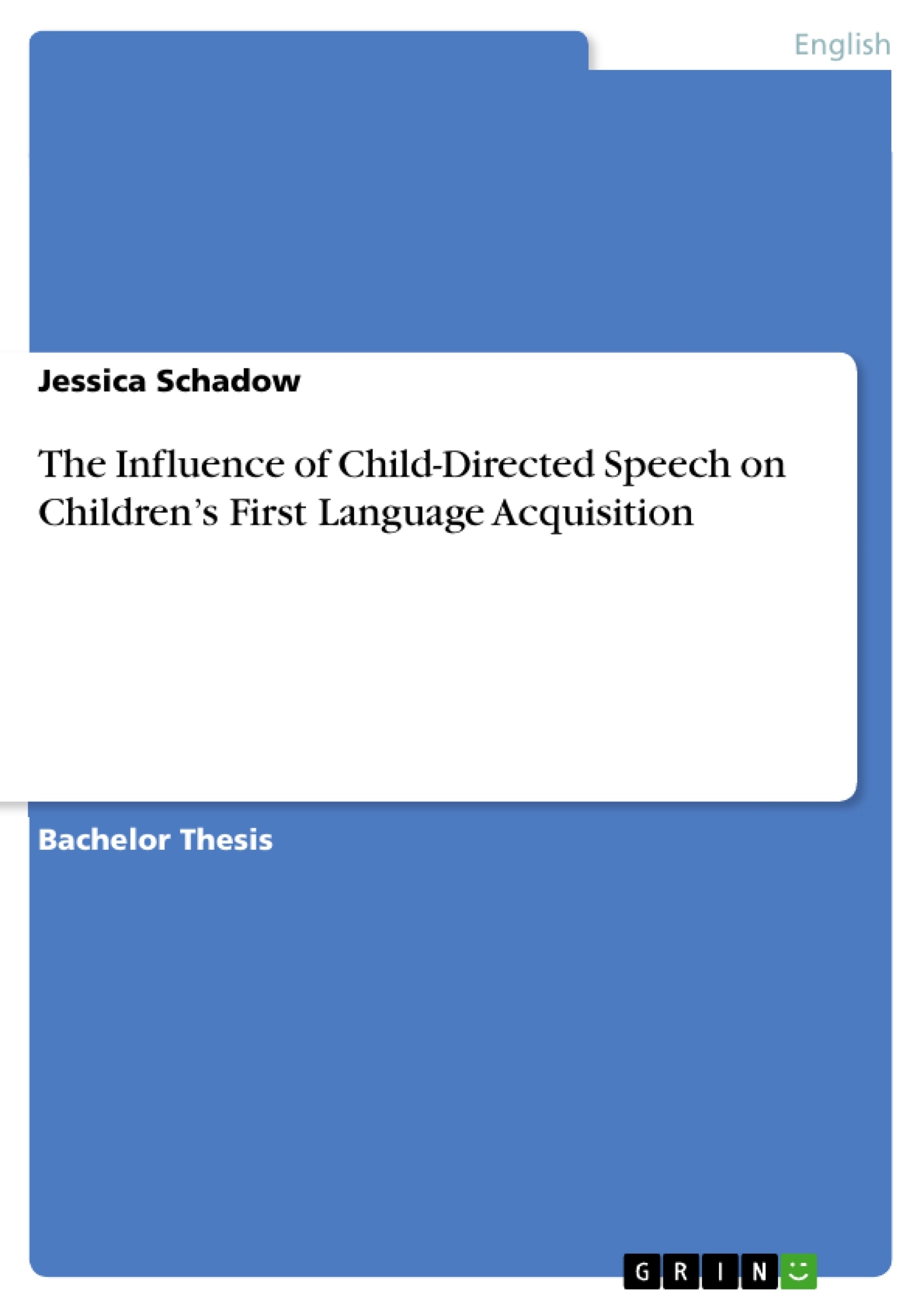“Language Acquisition represents, perhaps, the most impressive achievement in human development. This is all the more fascinating since this process is quite rapid, and the successive stages for the progressive acquisition of the native language follow a quite similar chronology across languages.” (Dominey et al. 2004: 122)
What the linguist Peter Dominey here states describes people’s fascination about language, specifically language acquisition. Both are highly complex frameworks whose investigation, indeed, can be regarded as an inexhaustible enterprise. Nevertheless, research has been willing to face that challenge, and, over several decades, linguists have been trying to find out how exactly children acquire their native language. Children all over the world, regardless of language and culture, eventually acquire their mother tongue. However, the question how exactly children learn language has not been answered unanimously. One of the interesting observations in language is that adults change their speech while talking to children – a phenomenon referred to as Child-Directed Speech (CDS). Why does this adjustment take place? Changing one’s own speech in conversation with children seems to occur quite intuitively and can be observed in any situation of everyday life in which adults and children are involved. Due to the examination of cross-cultural issues in my minor bachelor studies and given my personal interest in other cultures, I attach high importance to the consideration of cultural differences when investigating children’s first language acquisition. Moreover, it not only seems to be highly interesting but also indispensable to link theoretical aspects with practical relevance and vice versa: Ongoing general discussions about upbringing and education have revealed the high social relevance of this subject. Thus, the aim of this paper is to examine the influence of CDS on children’s first language acquisition. This will be accomplished by linking theoretical linguistic theory with empirical findings from different fields of research.
Table of Contents
- 1. Introduction
- 2. Theoretical Background
- 2.1 Nativist Approach
- 2.2 Emergence Approach
- 3. Child-Directed Speech
- 3.1 Joint Attention Comes First
- 3.2 What is Child-Directed Speech?
- 3.3 Relevant Characteristics of Child-Directed Speech
- 4. Study Cases
- 4.1 Influence on Child-Directed Speech in Different Circumstances
- 4.1.1 Head-Turning-Preference Procedure
- 4.1.2 The Effects of Maternal Depression on Child-Directed Speech
- 4.1.3 Gender Differences in Child-Directed Speech
- 4.1.4 Discussion
- 4.2 Child-Directed Speech in Other Cultures
- 4.2.1 Quiché Mayan Speech Community
- 4.2.2 Kaluli Speech Community
- 4.2.3 Discussion
- 5. Conclusion and Outlook
Objectives and Key Themes
This paper examines the influence of child-directed speech (CDS) on children's first language acquisition. The author aims to link theoretical linguistic theory with empirical findings from different research fields to better understand this complex process. The primary objective is to explore how CDS contributes to language development and how this phenomenon varies across different contexts. Key themes discussed in the paper include:- The role of the Nativist Approach and the Emergence Approach in understanding language acquisition.
- The importance of joint attention and the characteristics of CDS.
- How different circumstances, such as the use of Head-Turning-Preference Procedure, maternal depression, and gender differences, influence CDS.
- Cross-cultural perspectives on CDS, examining the speech of Quiché Mayans and Kaluli communities.
Chapter Summaries
Chapter 1 introduces the topic of language acquisition, highlighting its complexity and the ongoing research efforts to understand how children learn their native tongue. The chapter also introduces the concept of CDS and explains the paper's objective of exploring its influence on first language acquisition.
Chapter 2 presents two major theoretical frameworks within language acquisition: the Nativist Approach and the Emergence Approach. The chapter provides an overview of both theories, emphasizing the role of innate knowledge and environmental influences in language development.
Chapter 3 delves into the concept of CDS, discussing its characteristics and the role of joint attention in facilitating communication between adults and children. This chapter explains the specific features of CDS that are thought to aid in language acquisition.
Chapter 4 examines five study cases to investigate the influence of CDS on children's first language acquisition. The first three studies focus on different circumstances that affect CDS, including the use of the Head-Turning-Preference Procedure, the impact of maternal depression, and the influence of gender differences. The last two studies explore the presence of CDS in different cultural settings, focusing on the Quiché Mayan and Kaluli speech communities.
Keywords
This paper focuses on the influence of child-directed speech (CDS) on first language acquisition, exploring the interplay of theoretical frameworks and empirical findings. Key concepts include Nativist Approach, Emergence Approach, Universal Grammar, joint attention, Head-Turning-Preference Procedure, maternal depression, gender differences, and cross-cultural variations in CDS. The paper highlights the importance of understanding how CDS contributes to language development and how these patterns vary across different cultural contexts.- Quote paper
- Jessica Schadow (Author), 2014, The Influence of Child-Directed Speech on Children’s First Language Acquisition, Munich, GRIN Verlag, https://www.grin.com/document/283090



